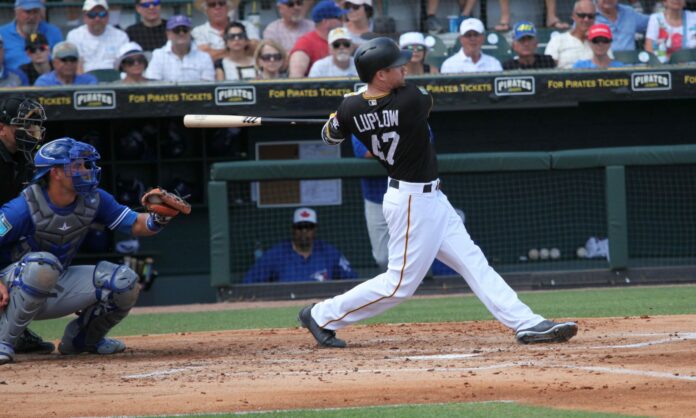The Cleveland Indians have been a Major League team since 1901. The Pittsburgh Pirates came around 19 years earlier. In 119 years since Cleveland joined the American League, the two teams have made 19 trades that have involved at least one Major League player. Here’s a look at those deals, along with some interesting facts about the trade history between the two clubs.
Despite the fact that the two teams were both Major League clubs by 1901, the first trade between the two clubs didn’t happen until 45 years later. There were at least three transactions between the teams prior to 1946, but they all involved one player being purchased by the other club.
That is obviously a long time to go before they’re first player-for-player deal, but the National League and American League didn’t do many trades early on in their existence. The Pirates in particular followed that rule. For example, the Chicago White Sox and Pirates made one trade before 1954. The first trade with the Detroit Tigers happened in 1962!
The Pirates and Indians broke their non-trade streak on December 7, 1946 and it involved a future Hall of Famer. The Pirates sent veteran catcher Al Lopez to the Indians for outfielder Gene Woodling. Lopez was an All-Star catcher known for durability, but earned his Cooperstown plaque as a manager. Woodling lasted just 22 games in Pittsburgh.
Almost exactly one year later, the two teams exchanged players again. This time they swapped veteran first basemen, with the Pirates getting Les Fleming and the Indians getting Elbie Fletcher. Neither player lasted long with their new club.
A 1952 trade was the first that involved multiple players from both teams. The Pirates acquired veteran infielder Johnny Berardino and minor league player Charles Sipple, plus cash, for pitcher Ted Wilks and infielder George Strickland. Just like the previous two trades, this didn’t amount to much.
The next two trades involved catcher Hank Foiles. The Pirates acquired him in 1956 for infielder Preston Ward and sent him back to Cleveland four years later for outfielder John Powers, who himself was a former Pirate already. The Pirates did well in the first deal, with Foiles making the All-Star team in his first season in Pittsburgh.
In 1973, the Pirates gave up pitcher Bob Johnson, who was a big part of the 1971 World Series winning season, for minor leaguer Bill Flowers. Johnson only lasted 14 games in Cleveland and had just 29 big league outings left at the time, but the Pirates got nothing from Flowers, who never made the majors.
After the 1979 season, the Pirates made a trade that could have paid off when they acquired young pitcher Larry Andersen for Larry Littleton and John Burden. Neither trade piece amounted to much for the Indians, but Andersen went on to have a long career as a reliever after the deal. Unfortunately for the Pirates, they gave him up to reaquire Odell Jones not long after acquiring him.
The next deal is right up there with the most famous deal between the two squads. The Pirates gave up Bert Blyleven and Manny Sanguillen for Gary Alexander, Victor Cruz, Bob Owchinko and Rafael Vasquez. While the loss of Sanguillen didn’t hurt because he had unknowingly already played his final big league game, Blyleven still had a great career ahead of him on his way to Cooperstown. He wanted out of Pittsburgh and the quantity over quality approach to the trade did not pay off.
The Pirates swung and missed on the next deal. They exchanged minor leaguers, with Steve Farr going to Cleveland and John Malkin joining Pittsburgh. Farr had 11 seasons in the majors after the deal. Malkin never played in the majors. The following deal in 1985 was basically the same, with the Pirates giving up minor league Scott Bailes for infielder Johnny LeMaster. Bailes pitched for nine seasons. LeMaster hit .155 in 22 games.
Things get a lot better with the next deal three years later. The Pirates got Jay Bell for Denny Gonzalez and Felix Fermin. Bell was actually the player to be named later and joined the Pirates four months after the initial deal was made. This was the first of two one-sided trade wins for the Pirates over the Indians.
It was ten years between the Bell deal and the Pirates biggest heist. During that time, the Pirates made two trades to help with their run of playoffs, acquiring outfielders Mitch Webster (1991) and Alex Cole (1992). Cleveland got 34.2 innings from Mike York as their return in those deals.
Almost ten years to the day they acquired a future All-Star/Gold Glove/Sliver Slugger shortstop, the Pirates acquired All-Star outfielder Brian Giles for Ricardo Rincon. In both cases, the Pirates picked up a player who had big league experience, but was far from his peak performance. The Giles acquisition led to the Pirates getting Jason Bay and Oliver Perez, so this deal paid off again.
Two years later, the teams made a deal that ended up about even, with Wil Cordero going to Cleveland and Enrique Wilson and Alex Ramirez joining Pittsburgh. That was followed in 2004 by the veteran deal of Arthur Rhodes to Cleveland for Matt Lawton. A trade of Brian Bixler for minor leaguer Jesus Brito did nothing for either team and Bixler ended up back in Pittsburgh months later.
In 2013, the Pirates got Jeanmar Gomez for minor league Quincy Latimore, which leads up to the most recent deal. In November of 2018, the Pirates got top prospect Tahnaj Thomas, along with Erik Gonzalez and Dante Mendoza, for Jordan Luplow and Max Moroff. This deal has a chance to pay off for both teams still. Maybe one day we will be writing about what a steal Luplow was for the Indians, while it’s possible that Thomas reaches his peak and the Pirates cash in big.


